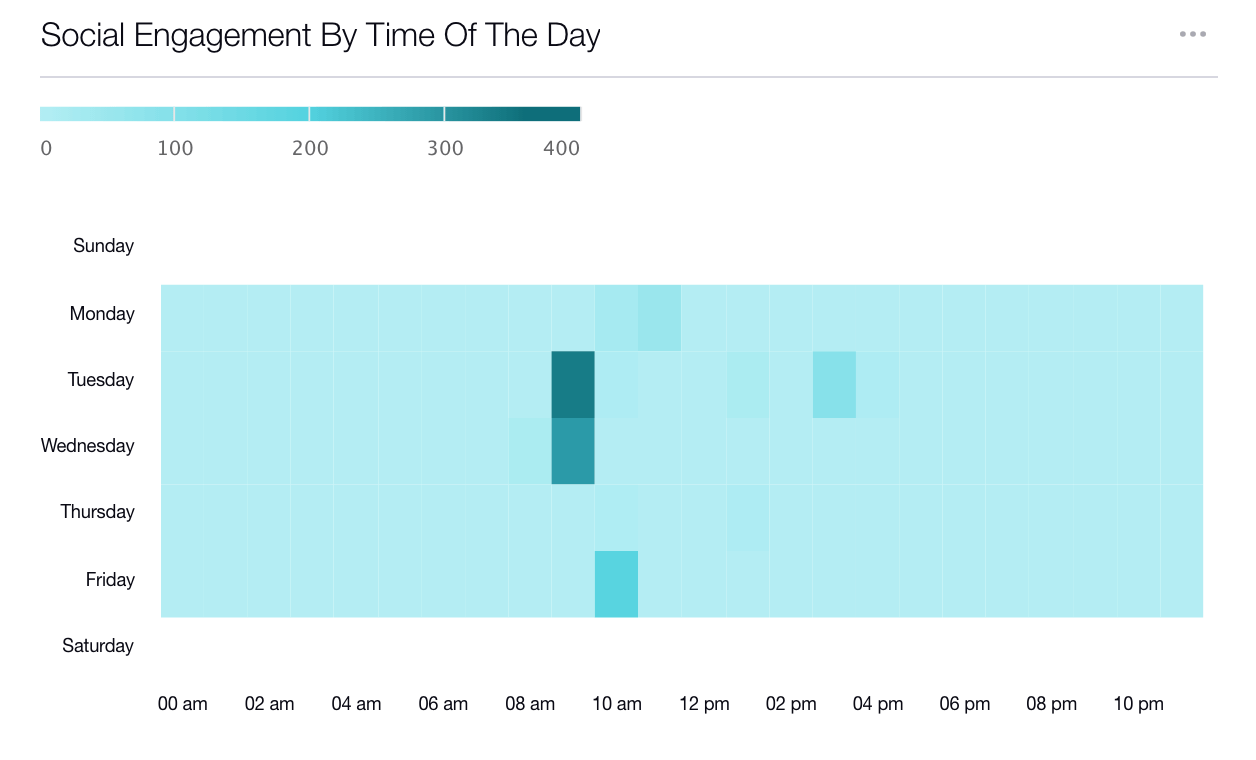Developing a social media content calendar can be challenging.
It can sometimes also be frustrating.
But once you’ve created your social media editorial calendar – and the content is created – it will definitely help your marketing efforts, today and long into the future!
Why You Should Create a Social Media Calendar
Creating a social media calendar has many benefits.
Time Management
Planning ahead will let you organize the content, but also will be able to schedule it ahead of time, so you aren’t leaving it to the last minute.
Team Collaboration
Developing a social media content calendar help you better collaborate with your team members who are working on other aspects of your client’s marketing efforts.
Recycle Successful Campaigns
When a social media marketing calendar is done and executed, you can go back and see what you developed, find out what was successful, and try to recreate that again.
You can also repurpose or spin out new content from previous successful posts you already developed.
Higher Quality Content
If you’re rushing to post out content without a social media calendar, then have a higher likelihood of developing low quality content that doesn’t resonate with, or engage, your audience.
Big Campaigns Need Planning
If you deal with big brands, then you know that every year or so, they place a lot of budget into a big brand campaign.
It takes time and planning to help support these types of campaigns with social media content.
Tips to Build out Your Social Media Calendar
1. Know Your Audience
Even before you start jumping into creating and developing the content, you need to think about your audience and/or the personas you have developed.
A persona is a type of fictional character that your marketing team develops which shows various behaviors and characteristics that your ideal customer would have.
Researching and developing content will become much easier once you know who your audience is and what they want.
For example, I work with clients who are in the healthcare vertical, and fourth quarter tends to be very hectic because that’s Open Enrollment Season.
Multiple campaigns have to be developed that echo roughly the same messaging. But target markets are split up by people under 65, or over 65 and some years we tend to focus on a specific age range, in addition to focusing on a specific location, depending on the market saturation.
All these details help form the messages you create for all your social media campaigns.
2. Identify the Goal of Your Content
Not all content you will promote in social media should have sales goals attached to it. If you do this, your audience will get bored by your constant and repetitive sales pitch.
Instead, when planning your content calendar, keep in mind what the objective of each post will be. Some will be to drive sales, but others will be done to simply get engagement and entertain your audience.
The perfect mix of education, entertainment, along with sharing your product offerings, will make for a great calendar!
3. Consider Seasonality
Another item that may help you develop your messaging is seasonality.
For ecommerce that could be around Black Friday, Cyber Monday, and various other holidays. Other verticals also tend to use seasonality differently.
In healthcare marketing, seasonality tends to be around not only around pertaining to buying health care plans, but also awareness months that focus on different health conditions and causes in order to bring education and attention to them.
Healthline is one site I go to for this information because they have a handy directory of all things around health awareness and use this content to help frame the month.
4. Figure Out Your Timing
Timing is everything. It’s also something you must consider when publishing your content calendar.
My team uses Sprinklr, a customer experience platform that lets you schedule your content, see all comments, reviews, and messages in one view, and what day and time my content is being most consumed.
Below is an example of social engagement for one of my clients. Now I know which days and times are most impactful when planning my calendar.

5. Use Others Viral Content for Engagement
While creating your own unique content for your social media calendar should be a top priority, it is fine once in a while sprinkle in posts from popular pages, as long as it’s content that is likely to appeal to your demographic.
I’ve seen several brands do this, and it is also a tactic that can be planned out in advance.
As this content is being shared by a brand, it’s important for the message to be not only something that would appeal to your audience but also content that tends to lean on the more wholesome or safe side.
Keep in mind that you should always get approval for this content by your client, as you would for other content you created.
6. Use Templates, Tools & Apps
Initially, I started this calendar but using a template that HubSpot had created, but I further customized mine based on my needs and wants.
You can see a version of my template here.
There are loads of tools, templates, and apps out there to help you build your calendar. Personally, I start with a simple spreadsheet, and have two tabs and then organize my thoughts.
The first tab is labeled “Master Calendar,” which shows the topics of the post.
The labels, which you can see below, have
- Key message.
- Date.
- Platform (Twitter, Facebook, LinkedIn, Instagram, etc.)
- Any comments to help describe the message.

A handy tip for the Key Message section: if you’re sharing a link, make sure the topic title post is linked to the content. That way when the social media content calendar is being distributed, individuals will be able to see where the audience will be directed to.
The second tab is where all the creative lives and that is split up into two sections:
- Organic.
- Paid.
I further break out the paid portion, but labeling each campaign with the amount I will spend on that campaign. That way when the client sees the calendar for the month ahead, they will know where their budget is being focused on and can be altered to their liking.
I usually will insert screenshots and then go to Format > Compress > Picture Quality: Best for sending in e-mail, which helps to share out the content calendar.
You can also use Google Docs in this capacity, which can help with the ease of sharing.

Other tabs you can add, depending on your needs are:
- Author
- Owner of Content
- Status (Approved, Loaded, Live)
- Format of Content (video, image, link to blog)
As I mentioned before, I use Sprinklr which has a content calendar built right into it, but here are a few other resources that can help you develop your content calendar:
- Sprout Social
- Airtable
- CoSchedule
- Trello
More Social Media Marketing Resources:
- 9 Simple Steps to Creating an Effective Social Media Strategy
- The Top 15 Tools for Managing Social Media Accounts
- How to Create Engaging Social Media Content That Can Drive Results
Image Credits
All screenshots taken by author, August 2018




